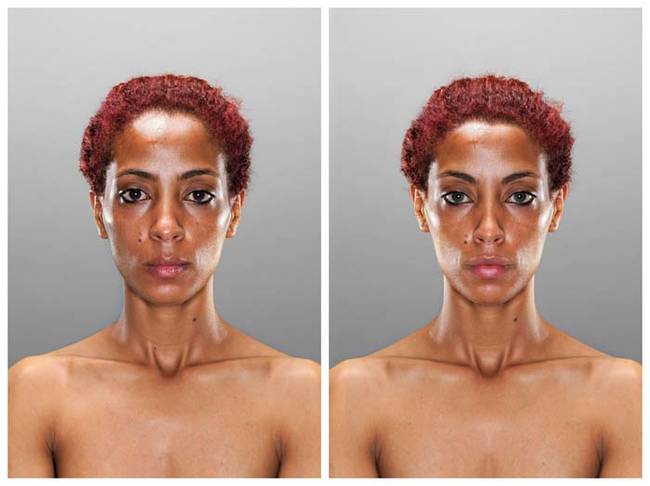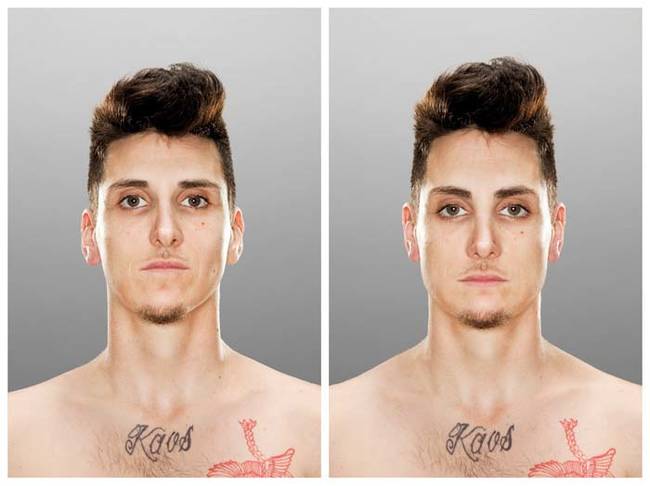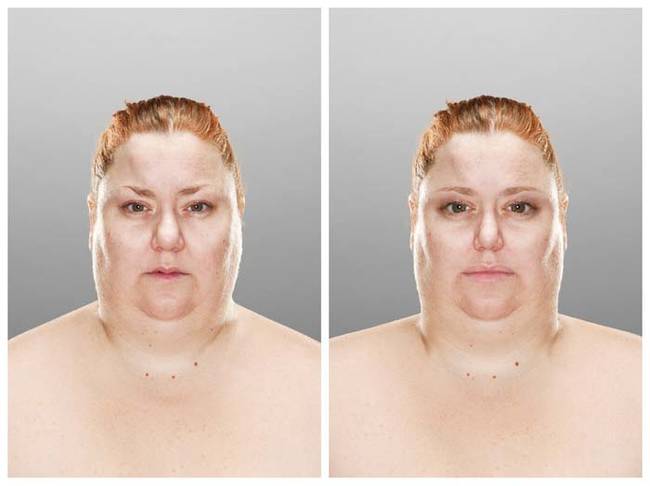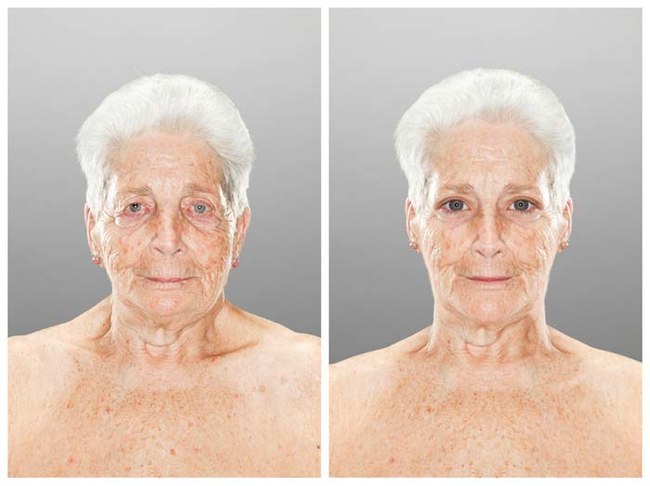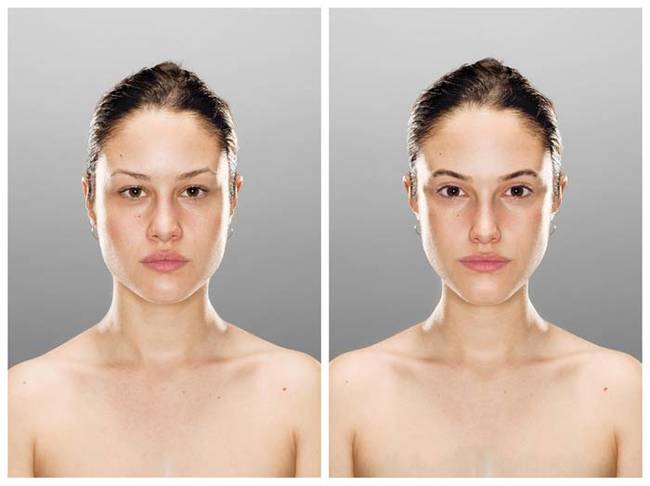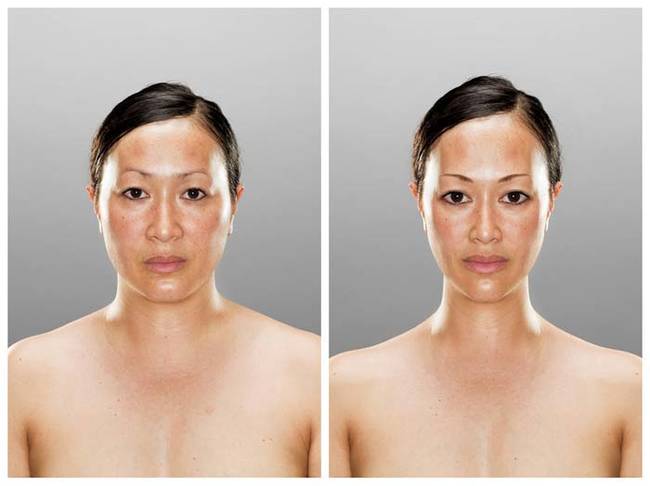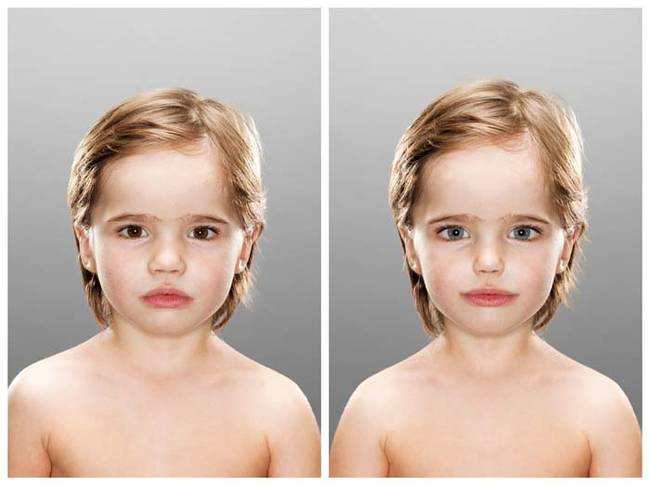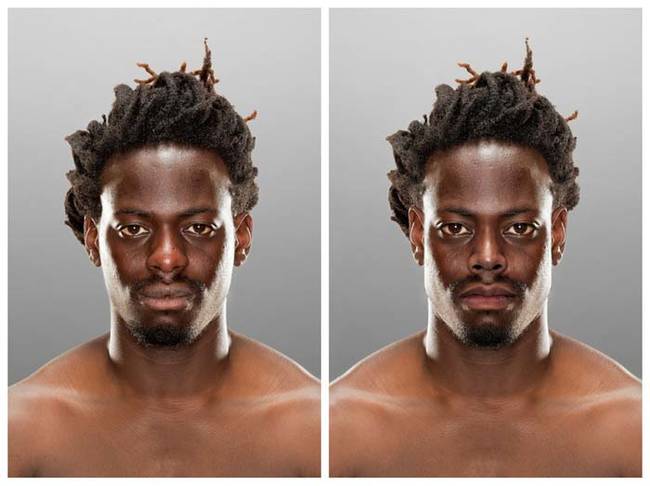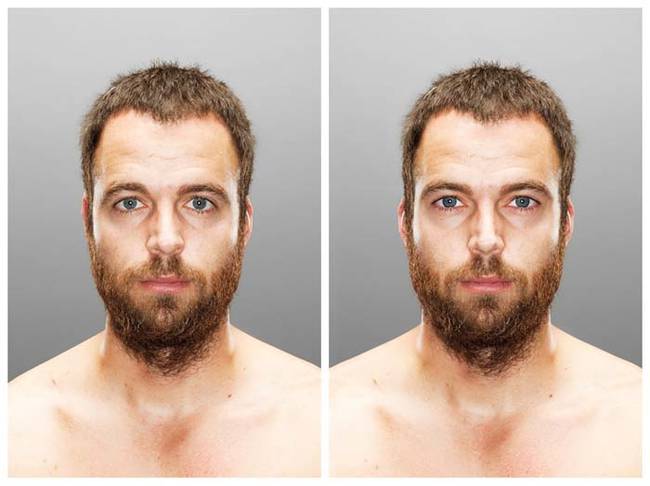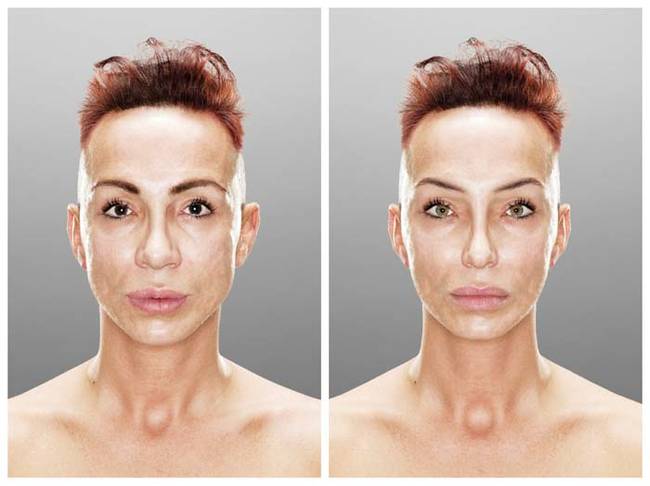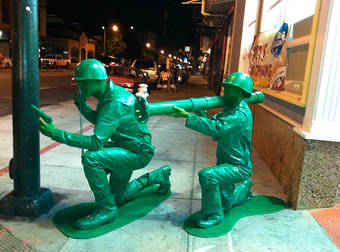Photographer Scott Chasserot’s latest photo project explores the deepest idea of who we are and how we perceive ourselves. The project, Original Ideal, combines photography and neuroscience to find our own idea of beauty.
First, Chasserot photographed his subjects in a studio setting.
He then used Photoshop to subtly manipulate the original pictures.
These changes included tweaking the size of a subject’s eyes, skin tone, and/or width of the nose and chin.
Describing the goal of the subtle variations for each photo, Chasserot said, “The idea is to produce a set of variations that either conform to the canons of beauty that have already been established, or go against it.”
In total, Chasserot created 50 new images with these subtle changes for each subject.
The subjects were then hooked up to an Emotiv brain scanner and shown these new photos, one after the other.
The machine would register the level of brain “engagement” for each photo. The photo with the most engagement was determined to be the subject’s self-image.
These photographs display the real image of the subject on the left, and the altered photo they most identified with on the right.
The goal of the project, according to Chasserot, is to get people to see how much they project their idea of beauty onto the subjects.
The inspiration for the project came when Chasserot caught himself reacting to a woman at the beach wearing sandals, despite only having four toes.
“My gut reaction was: ‘Wow, I would never. If I had four toes on each foot, I wouldn’t wear sandals.’ That vain reaction we all have sometimes,” said Chasserot describing the incident.
“My second thought was: She’s very brave. She’s intelligent enough to not care too much about what other people think of her physical appearance. It made me think about how much we project onto other people, even strangers.”
Here’s a quick video explaining the process of the project.
This is amazing. This combination of art and science is truly beautiful. To learn more about Original Ideal and his use of the EEG headset, visit the project homepage here. For more from Scott Chasserot, visit his website.
